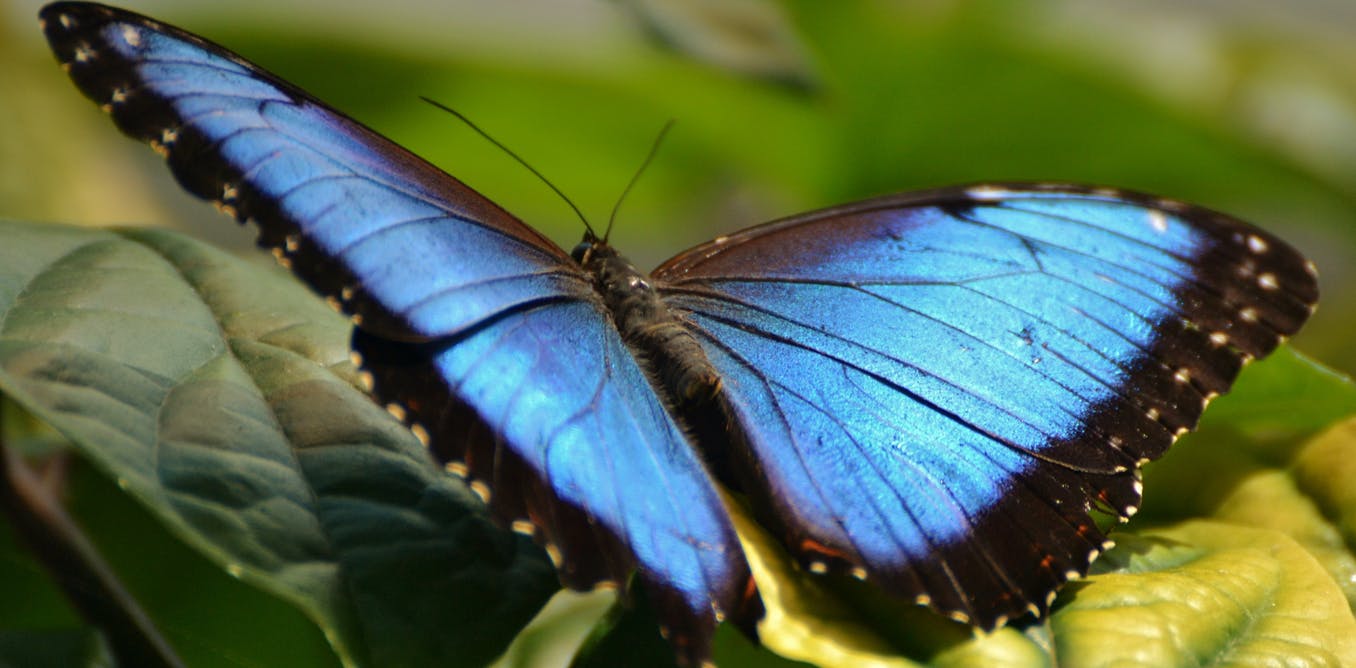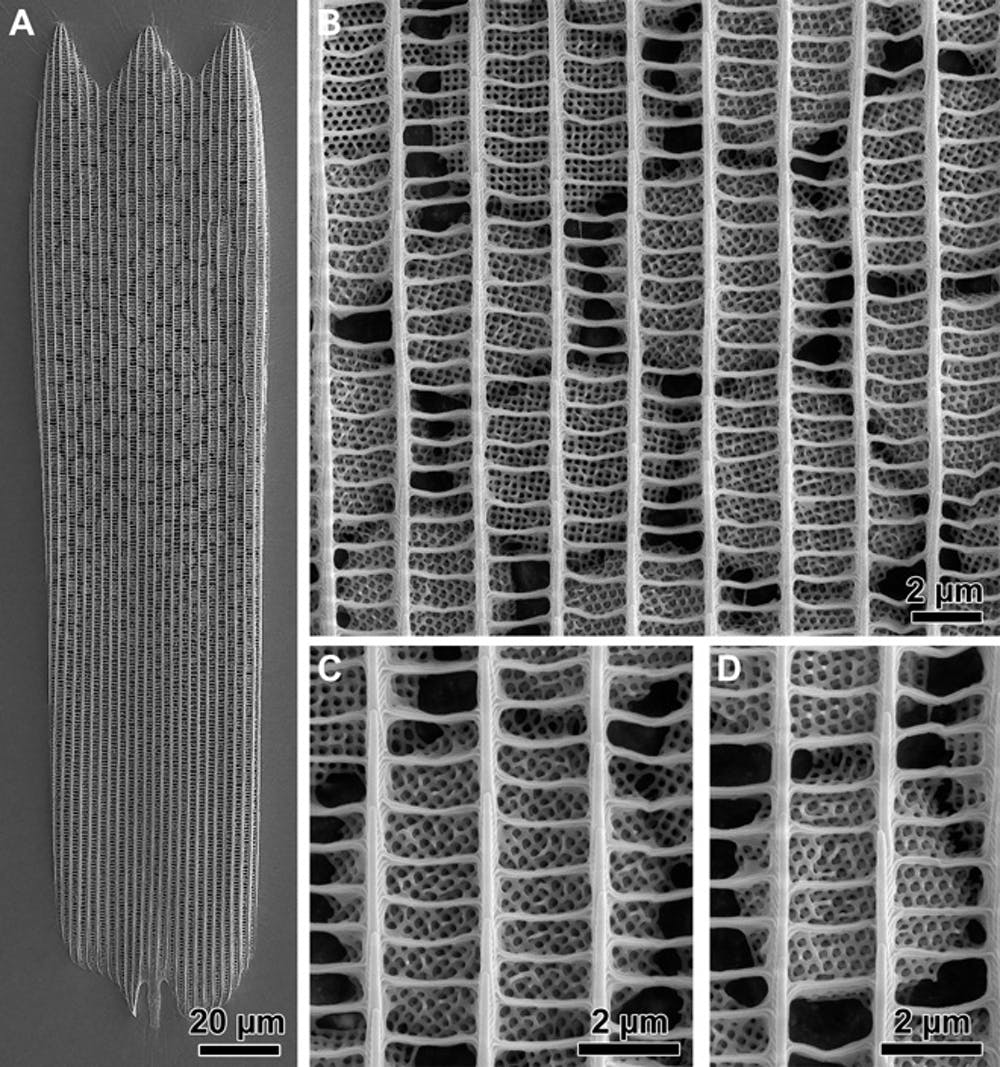Five nanotechnologies from nature that can inspire us to new developments
- Transfer

Although nanotechnology is usually described as a recent human invention, in nature you can actually find a lot of nanoscale architectures. They underlie the vital functions of various life forms, from bacteria to berries, from wasps to whales. The use of nanotechnology in nature can be traced to the natural structures that existed 500 million years ago. Here are just five sources of inspiration that scientists could use to create new generation technologies:
1. Structural colors
The color of some types of beetles and butterflies is obtained by nanoscopic columns located at the required distance from each other. They consist of sugars, for example, chitosan , or proteins, for example, keratin ; the width of the gaps between the columns is chosen so that the light has a certain color or brilliance.
The advantage of this strategy is sustainability. Pigments in the light are whitened, and structural colors remain stable for a surprisingly long time. In a recent study of the structural coloring of marbled colors of blue metallic, specimens collected back in 1974 took part, which maintain their color despite the fact that they are already dead.

The complex architecture of the crevices on Thecla opisena butterfly wings.
Another advantage is that the color can be changed by varying the size and shape of the slits, or filling the pores with liquid or steam. Often, a visible change in the color of the sample after immersing it in water is a sign of structural coloration. Some structures on the wings are so sensitive to the density of air in the crevices that the color changes in response to temperature changes.
2. Visibility at long distances
In addition to the simple reflection of light at an angle to create the appearance of color, some ultra-thin layers of slotted panels completely unfold the rays of light falling on them. Such reflection and blocking at the same time leads to the appearance of amazing optical effects — for example, butterflies , whose wings can be seen from 800 m , or beetles with bright white scales only 5 microns thick. These structures are so impressive that they can exceed artificially created objects 25 times thicker than them.
3. Sticking
Gecko paws can firmly bind with almost any hard surface in milliseconds, and break away from it without visible effort. This sticking has a purely physical nature without chemical interaction of the paws with the surface.

Micro- and nanostructures of the gecko's paws. The
active sticky layer of the gecko's paws is the branched nanoscopic bristle layer - “spatul”. Spatul length is 200 nm. Several thousand of these spatulas are attached to a micron-sized “set”. They consist of very flexible keratin. Although studies of the exact mechanism of joining and detaching Spatul are still underway, the fact that they can work without sticky chemicals is an impressive feature.
Gecko paws have other amazing abilities. They self-clean, resist adhesion and, by default, the bristles and legs are separated from each other. Such properties have led to the assumption that in the future adhesives, bolts and rivets can be made in a single process, causing keratin or similar material to different formwork.
4. Porous strength
The strongest form of any solid body is a single crystal, such as diamonds, in which atoms stand in almost perfect order from one end of the object to the other. Things like steel rods, airframes, or car linings are not crystals at all; they are polycrystalline, similar in structure to a mosaic of particles. Therefore, in theory, the strength of such materials can be improved by increasing the size of the particles, or by turning the entire structure into a single crystal.
Crystals are very heavy, but nature has a solution to this problem in the form of nanostructured pores. The resulting structure, known as the mesocrystal, is the strongest option in its weight. Spines of sea urchins and mollusks with mother-of-pearl shells have a mesocrystalline structure. These creatures have very light shells that can exist at great depths with high pressure.
Theoretically, mesocrystalline materials can be made, although with existing processes today, this would require complex manipulations. Tiny nanoparticles need to be rotated until they align with atomic precision with other parts of the growing mesocrystals, and they also need to be built around a soft layer in order to get a porous network.
5. Orientation of bacteria
Magnetotactic bacteria have an amazing ability to sense magnetic fields, including the field of the Earth, using small chains of nanocrystals - magnetosomes. These are grains ranging in size from 30 to 50 nm, consisting either of magnetite (a form of iron oxide) or, more rarely, of gregite (a combination of iron and sulfur). Several features of the magnetosome work simultaneously to obtain a foldable “compass needle”, many times more sensitive than human instruments.
Although these “sensors” are used only for navigation over short distances (magnetotactic bacteria live in puddles), their accuracy is incredible. They can not only be oriented in space - the variable size of granules means the ability to store information, and growth is observed only in the most magnetically sensitive atomic compounds.
However, since oxygen and sulfur are very actively combined with iron, producing magnetite, gregite, and another 50 different compounds, of which magnetic is very small, deliberate production of regular magnetosome chains requires remarkable skills. Such tricks are still beyond our capabilities, but in the future in navigation, it may be possible to make a revolution if scientists learn to imitate such structures.
